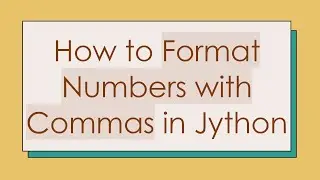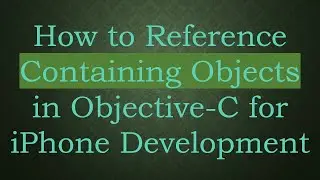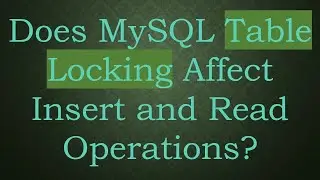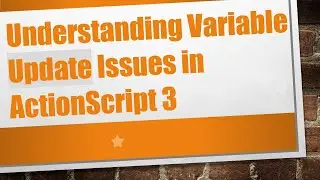Understanding the != Operator in SQL Server: Why Your Query May Return No Results
Discover why your SQL Server query using the `!=` operator may return no results and learn best practices for troubleshooting and optimizing similar queries.
---
Disclaimer/Disclosure - Portions of this content were created using Generative AI tools, which may result in inaccuracies or misleading information in the video. Please keep this in mind before making any decisions or taking any actions based on the content. If you have any concerns, don't hesitate to leave a comment. Thanks.
---
When working with SQL Server, you may encounter situations where queries do not behave as expected. For example, you might run a query designed to filter out certain entries, only to find that it returns no results at all. One common scenario involves using the != operator to exclude specific values.
The Scenario
Consider the following SQL query:
[[See Video to Reveal this Text or Code Snippet]]
At first glance, this query seems straightforward. It aims to select the JobType field from the Jobs table where the Done status is not equal to 1. However, if this query returns no results, even when you expect it to, there are a few possible explanations to consider.
The != Operator in SQL Server
In SQL Server, the != operator is used to denote 'not equal.' It is functionally equivalent to the <> operator. These operators are used to filter out rows where a specific condition is not met.
Potential Issues and Solutions
Null Values:
When the Done field contains NULL values, the != operator will not include those records in the result set. This is because any comparison with a NULL value is considered UNKNOWN in SQL Server. If you want to include records where the Done field is NULL, you need to modify your query as follows:
[[See Video to Reveal this Text or Code Snippet]]
Data Type Mismatch:
Ensure that the data types of the Done field and the literal 1 in the condition are compatible. SQL Server may not perform an implicit conversion, which would lead to zero results.
Incorrect Assumptions:
Double-check the data in your Jobs table. Sometimes the data may not be what you assume it to be. Run a query without the condition to inspect the Done field values, ensuring there are indeed records where Done is not equal to 1.
[[See Video to Reveal this Text or Code Snippet]]
Logical Errors:
Ensure there are no logical errors in the way the table and its relationships are structured. For example, database constraints or triggers might be influencing the data you're querying.
Conclusion
Understanding how the != operator works in SQL Server is crucial for writing queries that return expected results. By considering common issues such as NULL values, data type mismatches, and logical errors, you can more effectively troubleshoot and optimize your SQL queries.
Always remember to test your query on a subset of data to ensure it behaves as expected, especially when dealing with logical conditions like "Done != 1."































